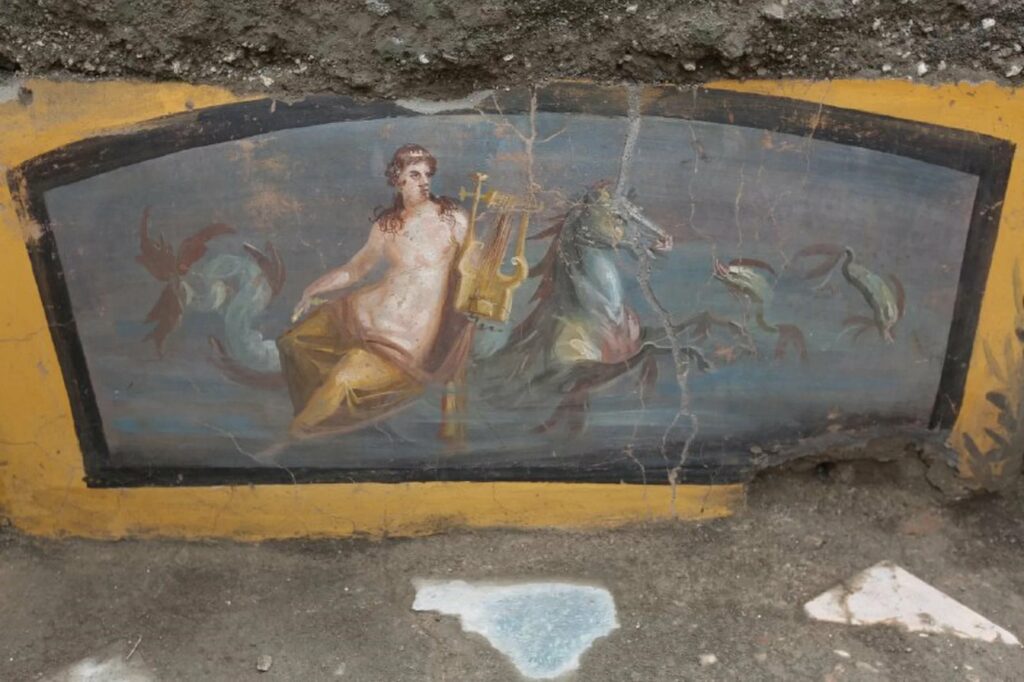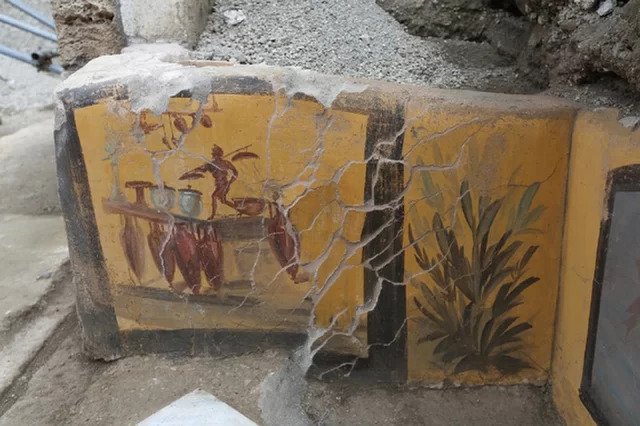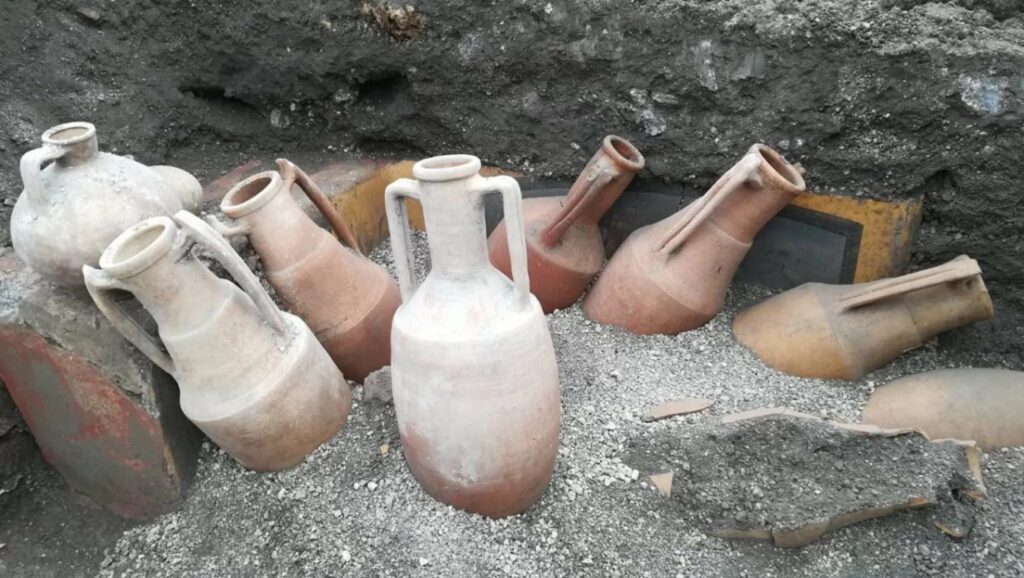Ancient Pompeii ‘Fast-Food’ Spot Lured Customers with Sexy Logo

Before Mount Vesuvius blasted Pompeii to smithereens in 79, it was possible to grab a bite to eat there at a “fast-food” joint decorated with a handsome sea nymph.
This ancient restaurant, known as a thermopolium — a snack bar serving drinks and hot, ready – to – eat food — was recently uncovered by archeologists during an excavation in the ancient city.
In fact, archaeologists know of about 80 such eateries in Pompeii already — showing that the folks of ancient Pompeii enjoyed munching on easily accessible, savory goodies, just as we do today.”
Even if structures like these are well-known at Pompeii, discovering more of them, along with objects which went hand in hand with commercial and thus daily life,” helps researchers learn more about daily life in ancient Pompeii, Alfonsina Russo, the interim director at the Archaeological Park of Pompeii, the group that did the research, said in a statement.
This particular thermopolium sits at the intersection of two alleys: Vicolo Delle Nozze d’Argento (Silver Wedding Alley) and Vicolo dei Balconi (Alley of the Balconies), which were excavated only recently.
The excavation is part of the Great Pompeii Project, which is uncovering and studying a poorly examined area within the city.
A painting on the thermopolium of a scantily clad sea nymph, known as a nereid, immediately caught the eye of archaeologists during the dig.
This nereid, who is riding a horse with a sea dragon-like tail, likely served as the eatery’s shop sign, the archaeologists working on the project said.
Next, to the nereid are paintings of a plant and a man working in a cafe, likely an illustration of a busy day at the snack bar.

Archaeologists also found clay jugs, known as amphorae, in front of the counter.
These amphorae look just like the ones in the thermopolium illustration, the excavators noted.
The discovery of this thermopolium “transport[s] us to those tragic moments of the eruption,” Russo said.

Life didn’t end after Mount Vesuvius erupted. The catastrophe likely killed about 2,000 people, but new research indicates that the rest of the city’s 15,000 to 20,000 inhabitants likely settled in nearby cities, including Naples and Cumae. Hopefully, these refugees found more thermopolia in their new neighborhoods.





